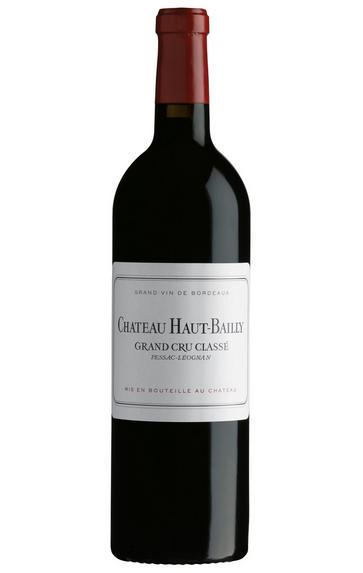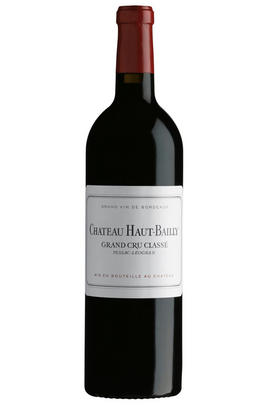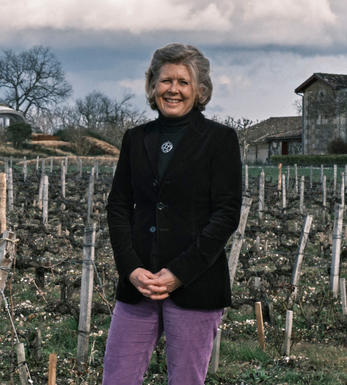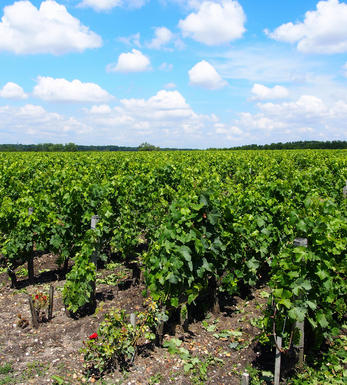
2010 Château Haut-Bailly, Pessac-Léognan, Bordeaux

Critics reviews
Neal Martin - 28/07/2017
Jancis Robinson MW- jancis robinson.com 12 Apr 2011
98 Robert Parker- Wine Advocate- Feb 2013
Proprietor Robert Wilmers and general manager/winemaker Veronique Sanders have done an extraordinary job at this estate, which has now become one of the superstars of Bordeaux as recent vintages have admirably demonstrated. An opulently styled effort, the blue/purple-hued 2010 offers a sweet kiss of graphite, charcoal, black cherries, black currants and compelling forest floor-like notes. A seamless integration of acidity, tannin, alcohol and oak is found in this full-bodied yet delicate, precise 2010. There is plenty of tannin but it is well-hidden behind the extravagant quantity of fruit. Give it 5-7 years and drink it over the following 35-40 years.
95-97 Robert Parker- Wine Advocate- May 2011
Steven Spurrier – Decanter – Apr 2011
About this WINE

Chateau Haut-Bailly
Château Haut-Bailly is a Graves Cru Classé estate that has really hit form in the last 5-7 years. Haut-Bailly was bought by the Sanders family in 1955 and was run by Jean Sanders until 1998 when Robert G. Wilmers, an American banker, purchased it. It is located in the commune of Léognan, which is usually more associated with white wine production.
Haut-Bailly has 28 hectares of vineyards which are very well sited on high, gravelly ground just east of Léognan village. The wine is a blend of Cabernet Sauvignon (65%), Merlot (25%) and Cabernet Franc (10%). It is matured in small oak barriques (50% new) for 15 months and is bottled unfined and unfiltered.
Ch. Haut-Bailly makes small quantities of a rosé from 100% Cabernet Sauvignon, preferring to use the single varietal to maintain freshness in the blend. The wine is fermented 1/3 in new oak barrels and 2/3 in stainless steel at 16°C.
Haut-Bailly is renowned for its smoothness and silkiness but, since the mid 1990s, the wines have better depth of fruit as well as more grip, concentration and body. They are now amongst the top echelons of Pessac-Léognan wines.

Pessac-Leognan
In 1986 a new communal district was created within Graves, in Bordeaux, based on the districts of Pessac and Léognan, the first of which lies within the suburbs of the city. Essentially this came about through pressure from Pessac-Léognan vignerons, who wished to disassociate themselves from growers with predominately sandy soils further south in Graves.
Pessac-Léognan has the best soils of the region, very similar to those of the Médoc, although the depth of gravel is more variable, and contains all the classed growths of the region. Some of its great names, including Ch. Haut-Brion, even sit serenely and resolutely in Bordeaux's southern urban sprawl.
The climate is milder than to the north of the city and the harvest can occur up to two weeks earlier. This gives the best wines a heady, rich and almost savoury character, laced with notes of tobacco, spice and leather. Further south, the soil is sandier with more clay, and the wines are lighter, fruity and suitable for earlier drinking.
Recommended Châteaux: Ch. Haut-Brion, Ch. la Mission Haut-Brion, Ch. Pape Clément, Ch Haut-Bailly, Domaine de Chevalier, Ch. Larrivet-Haut-Brion, Ch. Carmes Haut-Brion, Ch. La Garde, Villa Bel-Air.

Cabernet Sauvignon Blend
Cabernet Sauvignon lends itself particularly well in blends with Merlot. This is actually the archetypal Bordeaux blend, though in different proportions in the sub-regions and sometimes topped up with Cabernet Franc, Malbec, and Petit Verdot.
In the Médoc and Graves the percentage of Cabernet Sauvignon in the blend can range from 95% (Mouton-Rothschild) to as low as 40%. It is particularly suited to the dry, warm, free- draining, gravel-rich soils and is responsible for the redolent cassis characteristics as well as the depth of colour, tannic structure and pronounced acidity of Médoc wines. However 100% Cabernet Sauvignon wines can be slightly hollow-tasting in the middle palate and Merlot with its generous, fleshy fruit flavours acts as a perfect foil by filling in this cavity.
In St-Emilion and Pomerol, the blends are Merlot dominated as Cabernet Sauvignon can struggle to ripen there - when it is included, it adds structure and body to the wine. Sassicaia is the most famous Bordeaux blend in Italy and has spawned many imitations, whereby the blend is now firmly established in the New World and particularly in California and Australia.


Buying options
Add to wishlist
Description
Those of you who have followed Ch. Haut Bailly’s total regeneration over the last decade with us will not be at all surprised to note that this is their most spectacular wine to date, just pipping the 2009 by a whisker perhaps. If you end up with either of these gems in your cellar, you will be deliriously happy in years to come ‘comparing and contrasting’ these two spectacular vintages.
It has the most beautiful balance of power and weight, without being heavy and clunky. It is a joy to quaff - no other wine in Bordeaux tastes like Haut-Bailly; it’s a genuine marvel.
Simon Staples, BBR Fine Wine Director
wine at a glance
Delivery and quality guarantee